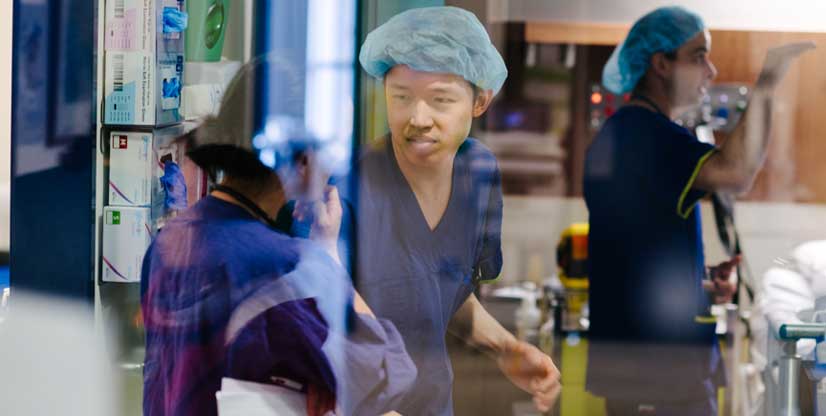About
Our physios are here for COVID patients long after the virus has gone
- Home
- About
- Latest news
- Our physios are here for COVID patients long after the virus has gone
Austin Health Senior Intensive Care Physiotherapist, Joleen Rose, recalls a patient of hers who ended up in ICU with COVID in June.
Before contracting the virus, the patient had been a healthy woman in her mid-50s with no physical limitations.
“She was so unwell she needed to spend significant time lying on her stomach to help with her breathing, which is called proning,” Joleen says.
“During her stay in ICU she needed two physiotherapists just to help sit up and once she went to the ward two weeks later, she could stand with the assistance of two physiotherapists.
“After she was discharged from the ward, she went to the Royal Talbot Rehabilitation Centre and could stand with the assistance of a person or a walker.
“Eventually she left Royal Talbot and could walk unaided but only for short distances.
“I saw her recently and a few months after contracting COVID, she can’t walk much further than 200m – she’s still seeing a community physiotherapist and making gains, but it’s a slow road.”
It's World Physiotherapy Day with a particular focus on Long COVID and rehabilitation, and as COVID cases continue to grow across the state, Austin Health Physiotherapists are bracing for more COVID patients who are suffering long after the virus has gone.
“The challenge is that Long COVID is made up of a constellation of more than 200 symptoms that fluctuate, so it can be difficult for patients to identify a specific issue and seek assistance,” says Austin Health Physiotherapy Manager, Professor Sue Berney.
The symptoms can include lethargy, fatigue, loss of strength and conditioning, concentration or memory issues, muscle aches and joint pains, shortness of breath, skin rashes, headache, changes in mood or ongoing respiratory issues.
About 1 in 10 patients exhibit symptoms of Long COVID for 12 or more weeks.
“Individuals that have experienced mild or severe COVID can develop Long COVID and patients find it difficult to resume their roles in their families and return to work,” Sue says.
Physiotherapy is a component of a multidisciplinary rehabilitation process and is tailored to the individual depending on their symptoms, goals and preferences.
The Austin Health ICU Physiotherapy team starts the rehabilitation journey that continues in hospital and into the community.
Rehabilitation includes education about resuming everyday activities at an appropriate pace that is safe and manageable for an individual’s energy levels within the limits of their symptoms, progressing strength and exercise tolerance and may include breathing exercises to help their lungs to recover.
Joleen and Sue’s message for the community is it can be difficult to identify, and if you've had COVID and think you are displaying symptoms, please seek medical assistance.


